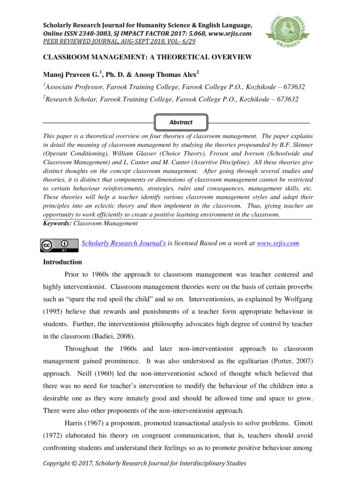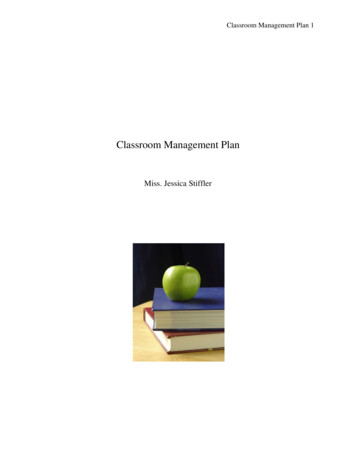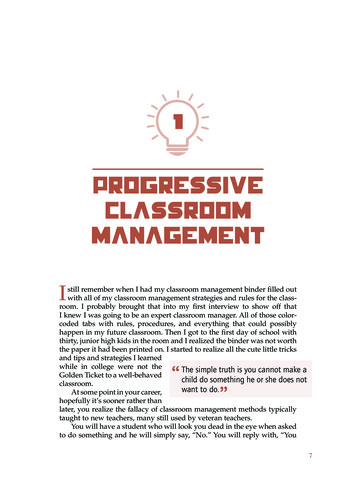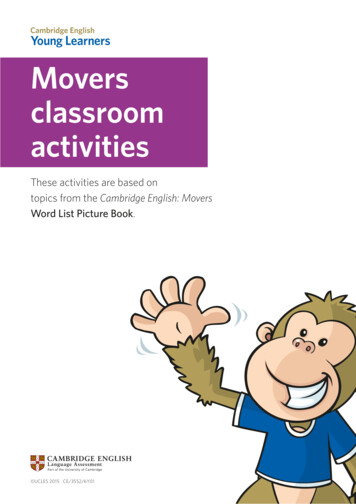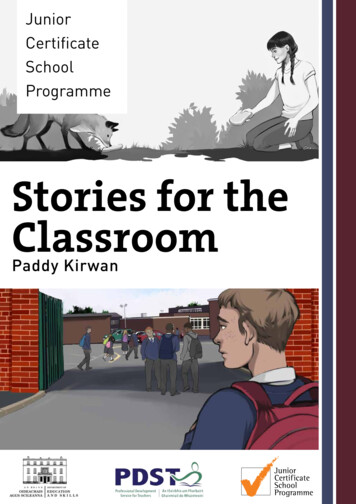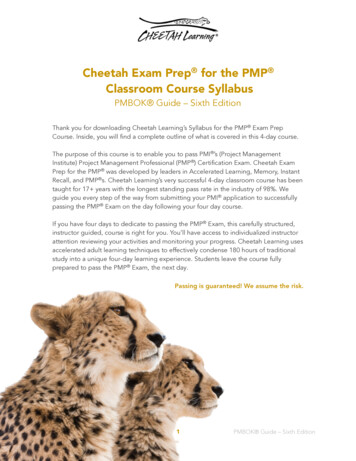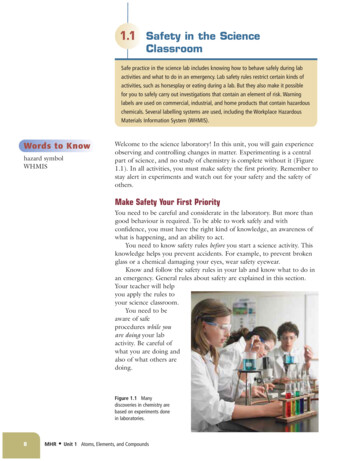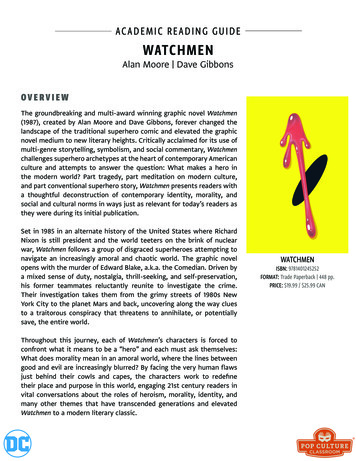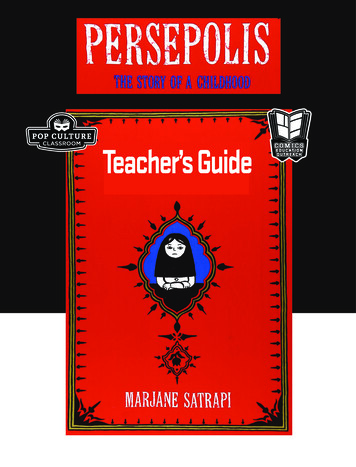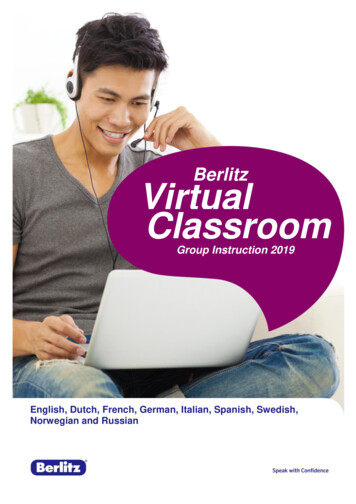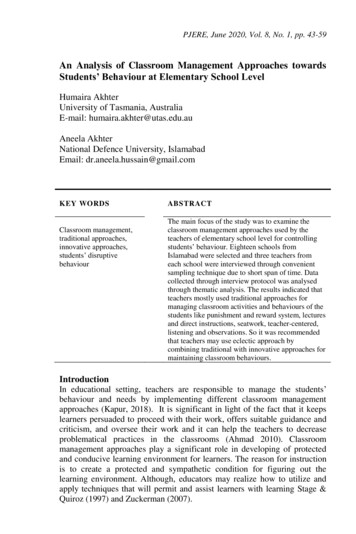
Transcription
PJERE, June 2020, Vol. 8, No. 1, pp. 43-59An Analysis of Classroom Management Approaches towardsStudents’ Behaviour at Elementary School LevelHumaira AkhterUniversity of Tasmania, AustraliaE-mail: humaira.akhter@utas.edu.auAneela AkhterNational Defence University, IslamabadEmail: dr.aneela.hussain@gmail.comKEY WORDSClassroom management,traditional approaches,innovative approaches,students’ disruptivebehaviourABSTRACTThe main focus of the study was to examine theclassroom management approaches used by theteachers of elementary school level for controllingstudents’ behaviour. Eighteen schools fromIslamabad were selected and three teachers fromeach school were interviewed through convenientsampling technique due to short span of time. Datacollected through interview protocol was analysedthrough thematic analysis. The results indicated thatteachers mostly used traditional approaches formanaging classroom activities and behaviours of thestudents like punishment and reward system, lecturesand direct instructions, seatwork, teacher-centered,listening and observations. So it was recommendedthat teachers may use eclectic approach bycombining traditional with innovative approaches formaintaining classroom behaviours.IntroductionIn educational setting, teachers are responsible to manage the students’behaviour and needs by implementing different classroom managementapproaches (Kapur, 2018). It is significant in light of the fact that it keepslearners persuaded to proceed with their work, offers suitable guidance andcriticism, and oversee their work and it can help the teachers to decreaseproblematical practices in the classrooms (Ahmad 2010). Classroommanagement approaches play a significant role in developing of protectedand conducive learning environment for learners. The reason for instructionis to create a protected and sympathetic condition for figuring out thelearning environment. Although, educators may realize how to utilize andapply techniques that will permit and assist learners with learning Stage &Quiroz (1997) and Zuckerman (2007).
PJEREClassroom management approaches and students’ behavior44Classroom managementIt is an extensive and inclusive idea which indicates to the activities andarrangements that instructors use to sustain discipline and portray alleducator endeavours to regulate a large number of exercises in the classroomincluding learning, social connection and learners’ practices. Management ofclassroom establishes three extensive measurements; individual, guidanceand control (Yasar, 2008).Behaviour managementIt is a part and plot of classroom management but is often focusedaround unacceptable and disruptive behaviour of students followed byinformation about what to do if students behave in an unacceptable ordisruptive way (Pitsoe, 2007). One of the scholars (Page & Jones, 2018)mentioned in their study that behaviour management is the level of control,how much you have control on you is linked with the behaviourmanagement.Classroom Management ApproachesClassroom management approaches are utilized to strengthen and verifylearning; assets and situation which are sufficient and helpful for powerfullearning and accomplishment as Korpershoek et al., (2016) mentioned intheir study that effective teaching depend on the use of effective classroommanagement approaches. Management of classroom problems can beovercome when students are appropriately involved in lesson planning andthe learning outcomes are shared with them (Creemers, 1994). As Owens(2018) stated that use of clear rules and commands, positive reinforcementof effective behaviour and effective strategies for violation of rules are goodexamples of classroom management approaches.Spahiu and Spahiu (2013) mentioned in their study the different types oftraditional methods of classroom management: reward and punishmentsystem, lectures and direct instructions, seatwork, teacher-centered, listeningand observations are very common in maintaining the classroom behavioursof the students (Khalid & Azeem, 2012).Rationale of the StudyClassroom management and discipline issues positioning at the highestpoint of the instructor's nuisance pain list. Different articles and studies havebeen composed examining strategies of control in the classroom. Evenrenowned experts, for example, Glasser (1969) and Canter (1979) havedeveloped approaches for classroom discipline that were fruitful in certainschools yet unsuccessful in othersIn Pakistan, teachers are more focused on the traditional approaches forcontrolling the behaviour of students and maintaining classroom discipline.As the world turns into global village and modernization, teachers may alsouse some innovative methods for classroom management. Therefore, thisstudy explored the nature and types of methods used by the teachers for
PJEREAkhtar & Akhtar45controlling the disruptive behaviour of the students in the classroom. Thisstudy was delimited to the elementary level teachers of Government schoolsof sector G from Islamabad. The sample size was very limited because ofshortage of time and financial resources so further research can be done witha large sample size.The study may be beneficial for the teachers in terms of using themost appropriate approaches of classroom management. It gives theinformation to the school principals to overcome the students’ disruptivebehaviours, classroom management problems faced by the teachers byhighlighting the innovative and multiple classroom management approaches.It also serves the educational administrations, teacher education institutes toinclude the domain of new approaches of classroom management in thecontent of teachers’ training.Objectives of the Study1. To investigate the classroom management approaches used by theteachers at elementary schools in Pakistan,2. To examine the use of multiple approaches of classroommanagement at elementary school level in Pakistan.Research Questions1. Which classroom management approaches are mostly preferred bythe teachers for classroom management in school?2. How can a teacher integrate multiple approaches to control thestudents’ behaviour?Literature ReviewClassroom management and students disruptive behaviours are themost challenging concern of the teachers as Mahvar et al., (2018) specifiedthat classroom management is formulating rules to settle the class, organiseactivities, supervise students’ work and needs and problem solving/tacklingwith students’ disruptive behaviour. A teacher rightly thinks that effectiveclassroom management is the basis of successful teaching and learning.Evertson and Weinstein (2013) mentioned that management of classroom isrelated to the move's educators make to control a worst situation for theacademic and social enthusiastic learning of learners, teachers creates aconducive learning environment. They portray five kinds of activities so asto achieve a broad-minded classroom management, instructors must:1. Creates caring attitude, strong associations with and amonglearners.2. Organize and execute guidance in manners that improve learners'entrance to learning.3. Engage learners' in classroom activities, which should be possibleby utilizing formulation peers and group discussions and activities.
PJEREClassroom management approaches and students’ behavior464. Encourage the advancement of learners' self-guideline and socialaptitudes.5. Be able to utilize suitable strategies to help learners with classroombehavioural issues. (Korpershoek et al., 2014).Students’ Behaviour in the ClassroomAccording to Sun & Shek (2012) and Yuan & Che (2012) positivebehaviours can be effectively communicated in classrooms throughrelationship-based classroom environment and practices. Some studentsadopt challenging behaviours and need extra support for the correction oftheir behaviour and for the development of positive behaviour. These sortsof behaviours comprise problematic talking, constant evasion of work,playing, meddling with educator exercises, verbal abuses, disturbing classfellows and inconsiderateness to instructor. If teacher can’t controldisruptive behaviour of the students in the class then he/she fails in his/herteaching as mentioned by Graham (2018).Different Approaches of Classroom ManagementTeachers use many different techniques for classroom management.The oldest technique of classroom management is traditional approachwhich ignores the student characteristics and center of focus is teacher.Classroom activities and teaching learning process need the context in whichmental level and interest of students is progressed. The constructivistapproach is a new and innovative approach for classroom managementwhich is good and more intensive on acquisition of knowledge (Khalid &Azeem, 2012).The Self-Discipline ApproachSelf-discipline approach is based on the motive that learners can berighthand to think about and direct their practices to relax themselves as wellas other people. supporters of this discipline claim that that instructors needto display the dispositions of admiration, authenticity, faith,acknowledgment, and sympathy toward learners so they can construct andset up connections with teachers (Glasser's, 1965)Table 1Self – Discipline Approach ModelModelKey aspectsWilliam Glasser Self-regulating learners are capable enough to(1965)deal with their own behaviours. learners are capable enough to learn certainbehaviours by looking at a full scope oframifications for their conduct. They can alsotake decisions related to their own behavioursas they know the consequences of that
PJEREAkhtar & Akhtar47behaviour. Learners can fulfill the matters of survival,love, power, fun and opportunities throughmotivation. Teachers may create a caring, sympatheticconducive environment where learners can engage in quality workand enjoy their work.The Instructional ApproachInstructors who utilize the instructional way to deal with classroomissues by effectively captivating learners in high-intrigue exercises outfittedto meet their interests, needs, and capacities. Hence, learners are persuadedto go to class, emphatically take interest in exercises, and deal with theirvery own conduct known as Instructional Approach. The advocates of thisapproach are Jacob Kounin and Frederick JonesTable 2The Instructional Approach ModelModelKey AspectsJacob Kounin Instructors may utilize their skills by starting(1970)the class along with the exercises, follow-uptechniques and shift from one topic to anotherthrough logical order. When learners are disappointed or exhaustedthey can’t focus on the subject, so it is the dutyof teachers to bring interest in the exercises andgroup activities to motivate them.Frederick Jones(1979) Teachers can create controlled classroomenvironment for learners to manage thedisruptive behaviours of the students.Instructors can regulate the class throughnonverbal cues and actions determined toindulge learners in a lesson and also classroomstructure, limit setting, duty preparing, andreinforcement frameworks can help teachers inmanagement.The Desist ApproachThe classroom management of desist approach gives the freedom toteachers to modify the classroom discipline. The educator builds up andauthorizes a lot of explicit guidelines to control learners conduct in theclassroom. (Charles, & Senter, 2005). Thus, this approach of classroommanagement gives educators capacity to rapidly deals with bad conduct,they can be seen as powerful frameworks. This methodology presumably is
PJEREClassroom management approaches and students’ behavior48the most broadly classroom management approach utilized in the presentschools. The desist approach practically used through Assertive modelwhich was developed by Lee and Marlene Canter (1979) and behaviourmodification of the students.Table 3The Desist Approach ModelModelKey AspectsAssertive discipline Instructors have the option to decide the(1976)ecological structure, principles, and schedulesthat will encourage learning of the students. Educators ought to set up a control plan,including proclamations of their desires,principles, and schedules and the kind oforder strategy to be utilized when learners getout of hand. Teachers can formulate the positive andnegative penalties for the classroommanagement and to control students’behaviours.Theoretical FrameworkAlbert Bandura (1993) built up Social Learning theory based on thehypothesis of personality. He places that individuals learn from each other,by means of perception, impersonation, and demonstrating. His hypothesishas regularly been known as an extension among behaviourist and cognitivelearning speculations since it envelops consideration, memory, andinspiration. He characterized self-efficacy as the "convictions in one's abilityto sort out and execute the strategies required to oversee plannedcircumstances". Self-efficacy is a focal part in overseeing today’s classroom.This theory is related to the study as it encompasses the factors which affectbehaviour of students and it also helps teacher to understand the reasonbehind a specific behaviour and used their abilities to implement classroommanagement approaches to control students’ behaviours.Related ResearchesDube and Orpinas (2009) analysed Behavioural support profiles ofschool refusal conduct. The information gathered by the school socialspecialists on school refusal conduct for 99 upper-elementary and middleschool students. The findings of the investigation demonstrated that: 17.2 %missed school to stay away from dread or tension creating circumstances,escape from unfriendly social or evaluative circumstances, 60.6% missedschool to increase parental consideration and 22.2 % had no profile.
PJEREAkhtar & Akhtar49Another study conducted by Hararsh and Kawaldh (2009) expectedto classify the practical patterns of control by the educators to maintaindiscipline in the classroom, Al-Mafraq District of Education. The data werecollected through questionnaire and the sample size was 210 ed
Jacob Kounin (1970) Instructors may utilize their skills by starting the class along with the exercises, follow-up techniques and shift from one topic to another through logical order. When learners are disappointed or exhausted they can’t focus on the subject, so it is the duty of teachers to bring interest in the exercises and group activities to motivate them. Frederick Jones (1979 .
